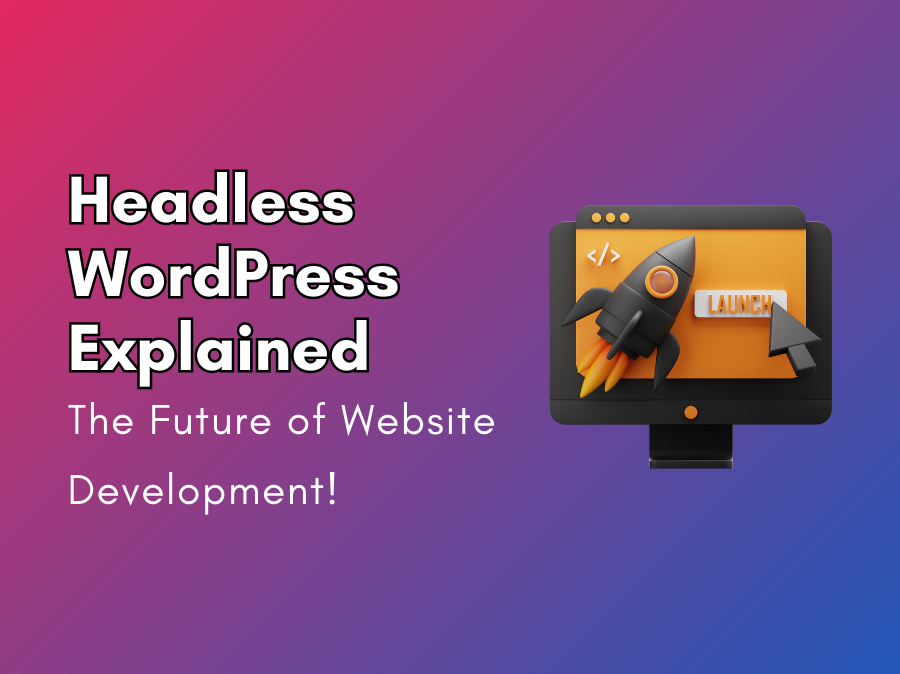What is Headless WordPress?
Headless WordPress is a modern way of using WordPress where the frontend (what users see) and the backend (content management system) are separated. In simple terms, WordPress still manages your content, but the display part is handled by another technology, often JavaScript frameworks like React or Vue. This approach gives developers more freedom to design fast, dynamic, and highly customized websites while still benefiting from WordPress’s easy content management.
Traditional vs. Headless WordPress
In traditional WordPress, everything—content, themes, and design—is tied together. It’s simple but can feel limiting and slow for advanced needs. Headless WordPress, on the other hand, uses WordPress only for managing content. The actual website is built with modern frontend frameworks. This separation means developers can build faster, more flexible sites, while content creators still enjoy the WordPress dashboard.
How Headless WordPress Works (Frontend & Backend Separation)
Headless WordPress works by using APIs (Application Programming Interfaces), mainly the WordPress REST API or GraphQL. Content is stored in the WordPress backend, and the frontend pulls that data through the API. Think of it like a restaurant: the kitchen (backend) prepares the food, but the waiter (API) delivers it to the customer (frontend) in a modern, stylish way.
Benefits of Going Headless with WordPress
- Speed: Headless sites load faster thanks to lightweight frontend frameworks.
- Flexibility: Developers can design without WordPress theme limitations.
- Scalability: Perfect for high-traffic websites and applications.
- Multi-platform publishing: Content can be delivered to websites, apps, and even smart devices at once.
In short, headless WordPress is built for performance and future-ready digital experiences.
Best Use Cases for Headless WordPress
Headless WordPress isn’t for every site. It’s most useful for:
- News portals needing real-time updates.
- eCommerce stores that require blazing speed.
- Multi-channel publishing (website + app).
- Brands that want unique, highly interactive websites.
Small blogs or simple sites may not need it, but businesses focused on performance and innovation benefit greatly.
Top Frameworks for Building Headless WordPress Sites (React, Next.js, Vue)
When going headless, developers often use:
- React – popular for building fast, interactive interfaces.
- Next.js – great for SEO and server-side rendering.
- Vue.js – flexible and beginner-friendly.
These frameworks work with WordPress APIs to deliver content dynamically. Choosing the right one depends on the project’s goals and developer preference.
Headless WordPress for eCommerce
For online stores, speed and user experience are everything. Headless WordPress with WooCommerce allows products to load faster, checkout flows to run smoother, and integrations with external tools to be easier. A headless eCommerce store feels more like an app, giving customers a seamless shopping experience.
Headless WordPress and SEO: What You Need to Know
A common worry is that headless WordPress might hurt SEO. The truth is—it depends on how it’s built. With frameworks like Next.js or Gatsby, server-side rendering ensures Google can crawl content easily. Structured data, sitemaps, and metadata can still be added, meaning SEO can remain strong or even improve thanks to faster loading times.
Challenges and Limitations of Headless WordPress
- Complexity: Requires more technical skills than traditional WordPress.
- Cost: Development and hosting can be more expensive.
- Plugin limitations: Some plugins designed for traditional themes may not work directly.
For beginners or small projects, traditional WordPress may be simpler. Headless shines when advanced customization and performance are priorities.
Tools and Plugins for Headless WordPress Development
Several tools make headless WordPress easier to implement:
- WPGraphQL – enables GraphQL API for WordPress.
- Headless WP Starter – a boilerplate setup for developers.
- Frontity (React framework) – built specifically for headless WordPress.
- Next.js & Gatsby integrations – great for SEO-focused sites.
Real-World Examples of Headless WordPress Websites
Big brands and media companies are adopting headless WordPress. For example:
- TechCrunch uses headless for faster content delivery.
- Nike integrates headless CMS for eCommerce.
- BBC America leverages it for multimedia-heavy content.
These examples prove headless isn’t just hype—it’s powering some of the internet’s biggest sites.
Future of Headless CMS in WordPress Development
The future of WordPress is heading toward flexibility. As web technologies evolve, headless CMS models will grow more common. Expect tighter integrations, better plugins, and simplified workflows, making headless accessible even for smaller businesses. In the next decade, headless could become the standard for high-performance WordPress sites.
Conclusion
Headless WordPress represents the next chapter in website development—faster, more flexible, and future-proof. While not necessary for every project, it’s a powerful choice for businesses that demand speed, scalability, and multi-platform publishing. For developers and brands that want to stay ahead, headless WordPress is not just a trend—it’s the future.
FAQs
1. Is headless WordPress good for beginners?
Not really—it requires coding knowledge and is better for advanced projects.
2. Can I still use WordPress plugins in headless mode?
Yes, but not all plugins work seamlessly. Some may require adjustments.
3. Does headless WordPress improve SEO?
Yes, when built correctly with server-side rendering and optimized content delivery.
4. Is headless WordPress more expensive?
Generally, yes. Development and hosting costs are higher, but performance gains often justify the investment.
5. Who should use headless WordPress?
Large websites, eCommerce stores, and brands needing speed, flexibility, and multi-channel publishing.
